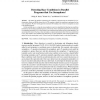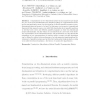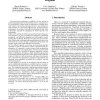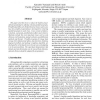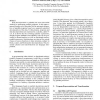CORR
2010
Springer
14 years 3 months ago
2010
Springer
We initiate the study of probabilistic parallel programs with dynamic process creation and synchronisation. To this end, we introduce probabilistic split-join systems (pSJSs), a mo...
CORR
2010
Springer
14 years 4 months ago
2010
Springer
Different from sequential programs, parallel programs possess their own characteristics which are difficult to analyze in the multi-process or multi-thread environment. This paper...
TRIER
2002
14 years 6 months ago
2002
It is known that interprocedural detection of copy constants and elimination of faint code in parallel programs are undecidable problems, if base statements are assumed to execute...
PAAPP
2002
14 years 6 months ago
2002
We demonstrate that the run time of implicitly parallel programs can be statically predicted with considerable accuracy when expressed within the constraints of a skeletal, shapel...
CORR
2002
Springer
14 years 6 months ago
2002
Springer
Abstract. We address the problem of detecting race conditions in programs that use semaphores for synchronization. Netzer and Miller showed that it is NP-complete to detect race co...
IJPP
2007
14 years 6 months ago
2007
Computations on two-dimensional arrays such as matrices and images are one of the most fundamental and ubiquitous things in computational science and its vast application areas, bu...
106
click to vote
MICRO
2006
IEEE
14 years 6 months ago
2006
IEEE
Since processor performance scalability will now mostly be achieved through thread-level parallelism, there is a strong incentive to parallelize a broad range of applications, inc...
PDSE
1998
14 years 7 months ago
1998
This paper describes how to reduce the burden of parallel programming by utilizing relevant parallel programs. Parallel algorithms are divided into four classes and a case base fo...
ICSE
2010
IEEE-ACM
14 years 8 months ago
2010
IEEE-ACM
The trend towards multicore processors and graphic processing units is increasing the need for software that can take advantage of parallelism. Writing correct parallel programs u...
ICPP
1991
IEEE
14 years 9 months ago
1991
IEEE
Data decomposition is probably the most successful method for generating parallel programs. In this paper a general framework is described for the automatic generation of parallel...

